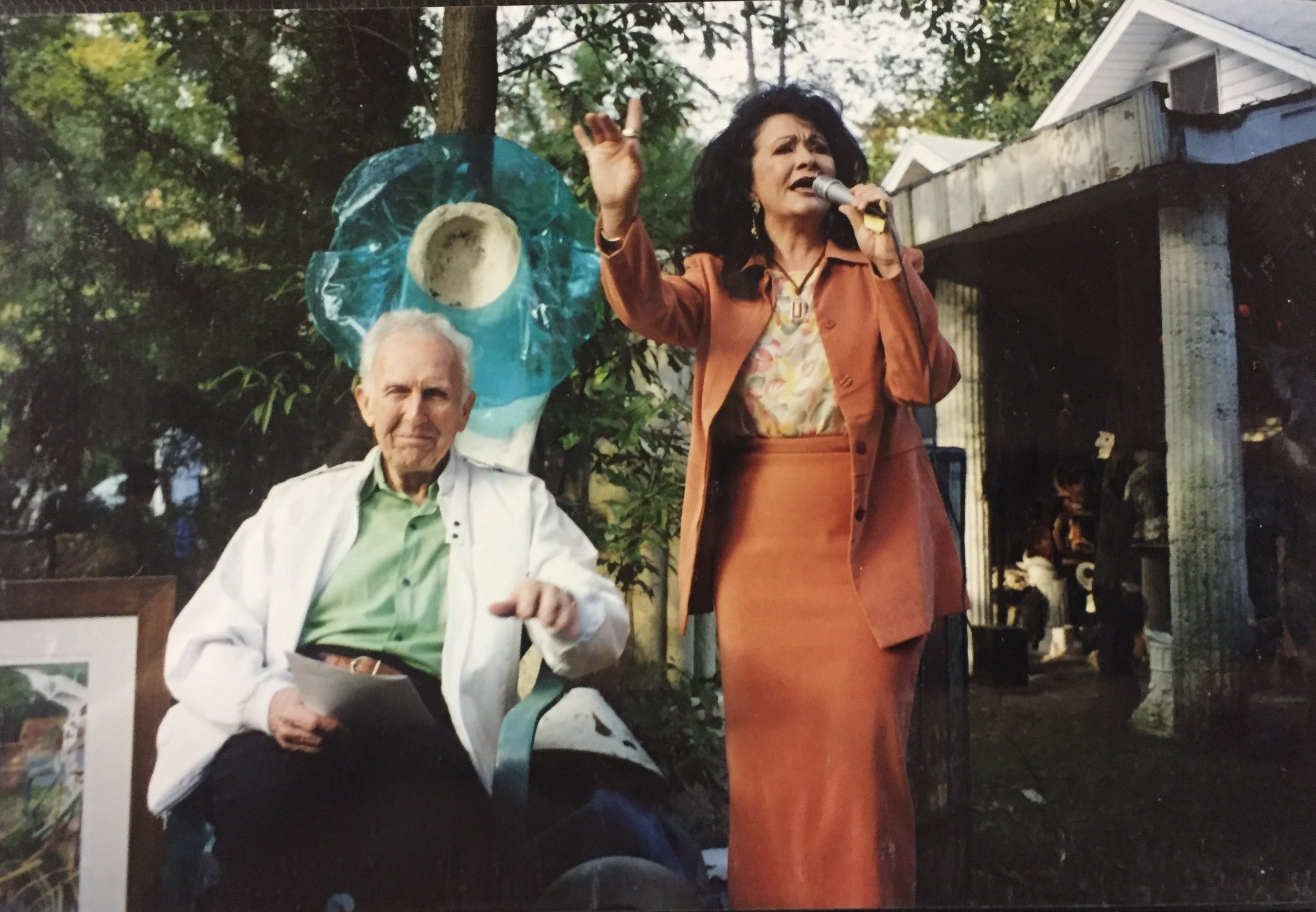Gene was a prolific artist who produced works in a variety of media during his lengthly career as an artist. Collage, painting, and sculpture were the more traditional forms he used. Many of his sculptures reflect work in wood and stone carving, pottery, welding, and plaster. The houses he owned in Conway became works of art themselves. Rental houses he owned contained rooms with differently patterned curtains and carpets, chandeliers from stage productions, and backyard sanctuaries of found objects.
After 1962, his house on Donaghey Avenue became the focus of his sculptured work. Influenced by the surrealist artist Max Ernst, Hatfield used discarded materials and found objects, such as machine parts and mechanical objects, transforming them into figures, often with humorous results.
He mixed and arranged, creating three-dimensional collages. He used bricks from a demolished building, along with found stones, pottery, and various other objects to cover his wood frame house. Hatfield also worked in the tradition of artists whose use of discarded materials cast light on the wastefulness of contemporary society. His Dum Wayter (1987) combined things such as grills, cooling units, bottle racks, and dishes. Many of these works were photographed and registered as part of the Smithsonian Institution’s Save Outdoor Sculpture program.
Not everyone appreciated his creative work. Many people, obsessed with how things should look, called Gene's work "junk" or "trash," because his abundant use of non-traditional materials pushed the boundaries of "normal." Gene was proud to be anything but normal. Despite rumblings of opposition, he continued creating his art and uncovering beauty in the mundane or ugly materials.
In late 2002, Hatfield’s house and yard were subject to complaints and legal action by public officials. Many who did not understand the artwork demanded that it be eradicated from the yard all together. The tension incited a discussion about censorship, and many people in the Conway community united behind Gene to save his yard full of artwork. A rally was held in the yard at which friends and community members displayed their support for Gene and his art - creating signs and speaking out for the freedom of art in Conway and beyond.
In the end, a legal ruling established its legitimacy as art. The grounds of his home remained full of witty and engaging forms and figures, frequently visited by students, not only in art classes but also writing classes. After his 1985 retirement, he continued to work as an artist in his unique style. He painted regularly with a class at UCA, exhibited works, and developed sculpture from the variety of materials he continued to collect.






